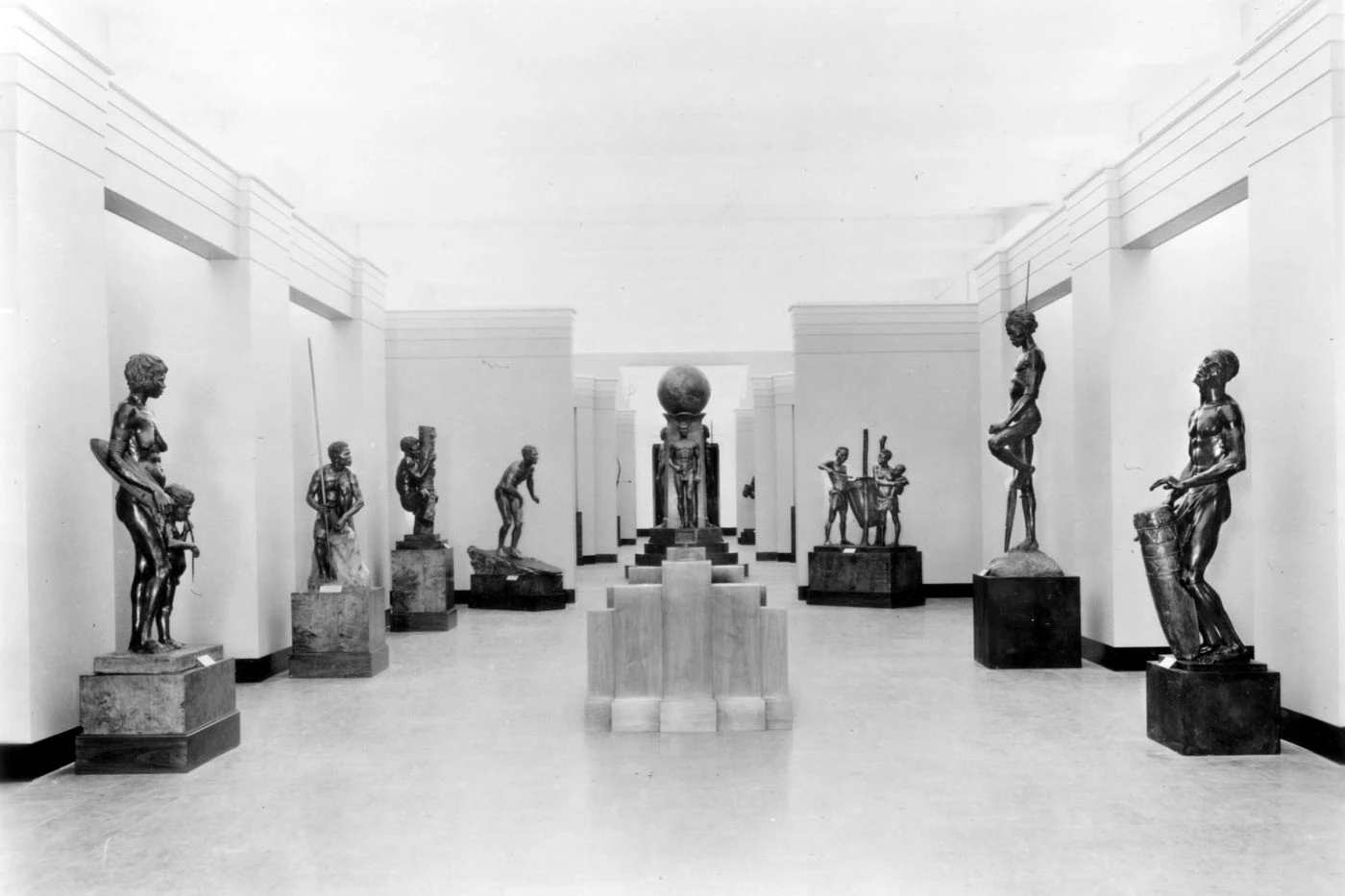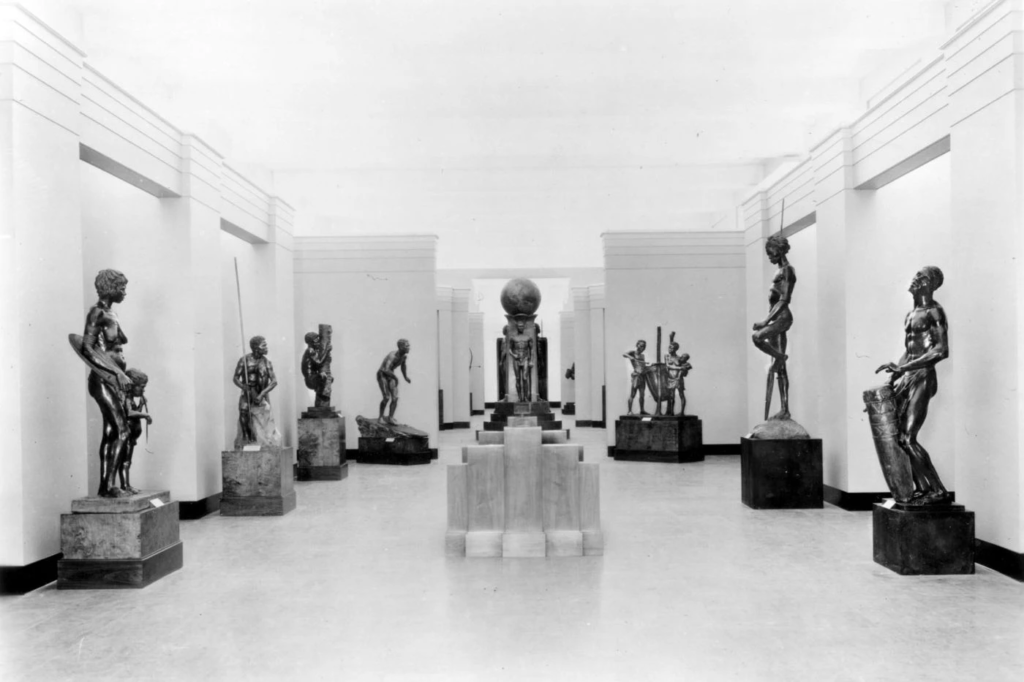The Hall of Men and Bible Translation

As a boy all I knew of the Field Museum in downtown Chicago was its collection of almost 40 million artifacts including its displays of one of the largest skeletons of a T. rex ever found. I had no idea that in nooks and crevices and in the stairwells and balconies there were bronze statues of the peoples of the world. Malvina Hoffman, under a special commission from the museum, traveled the world and created 104 bronze statues of people groups from the stately Masai in Kenya to the Kashmiri in South Asia. She travelled to remote places in the early 1930s for what the NY Times hailed as “probably the largest commissions granted any sculpture.” Often, the statues are fashioned after one individual named person. They are majestic and beautiful.

Although the project may have been birthed out of mistaken theories of race distinctives, the statues still show an amazingly dynamic variety of peoples and tribes all made in God’s image, which is breathtaking. I took my girlfriend at the time there one wintery day and we searched the museum for the sculptures, trying to figure out where they were from before we looked at their descriptions. Then, we sat down on one of the huge stone staircases and I asked if she would serve the people of the world with me for the rest of our lives. We are almost 30 years into that journey now and still serving together with both joy and reality.
I tell this story to say that I am a passionate, globally minded Christian, driven by fulfilling the Great Commission. And, because I do not want you to take what I have to say out of context. I fear that our massive use of human and financial resources to translate the Bible may not be the best use of the church’s resources nor should it be the church’s top priority. I’ve talked to many leaders about my thoughts, and I know from their reactions that I am questioning high-level evangelical orthodoxy. I think part of our mistake is believing that when finally translate the Bible into the last language that we will have freed Jesus to come back as all tribes and languages have been reached. I am not sure that is one of our more biblical presuppositions.
I am all for translating God’s powerful Word into every language and believe we should, as quickly as we can. But having worked in book and Bible distribution in Africa for about 25 years now, this is not an easy fix for getting God’s Good News to every people. Many languages are falling into disuse, with many children now learning in national languages instead. Some languages are still used in homes, in the market, and in the pulpit, but many of those who speak these languages use the internet in another language, and have pastors that study in an European language. In just one example, there are as many as 100 million Hausa speakers in Africa. When we had a book to sell in English and the same book in Hausa, in Hausa speaking areas we might sell 100 English to 4 Hausa. When we helped with a Books for Pastors project in Hausa some pastors would say to us: “we preach in Hausa, and this is great, but could we have these same books in English?” It is not simple to sort all this out.

But instead of adjusting for the present realities and needs, the church is still talking about Bible translation above all else in our churches. The huge Bible translation infrastructure has so dominated the narrative that the other needs are shouted out. We cannot hear them.
It is time for us to hear. At Oasis, we are working with one organization that has an annual budget of $25,000 in one country it serves to impact nearly 500,000 young people through its Bible clubs in schools. They have no Bibles for their students. For another ministry, they disciple about 2.3 million kids and about 1.8 million learn in English. They have no Bibles for their students either. In Nigeria the teachers of religious knowledge estimate that 40 million students take Bible studies in public schools in English, while few have Bibles. In Congo, pastors split French Bibles in two, one preaches from the Old Testament, one from the New and then they trade. This is not totally unusual. The church in Africa has gone from ten million members to 630 million in about a century, the greatest church growth in history. We estimate 400 million of those believers read in English, French, and Portuguese, the languages of education for most young people. Possibly 200 million of these believers do not have a Bible.
This is Bible poverty. And we can end it in Africa by building the systems and infrastructure to supply the needed Bibles in just three languages. Yet, we pour hundreds of millions of dollars into translating Bibles into languages that are dying. Comparatively, we spend little on supplying Bibles to the hundreds of millions of people who go to church every week without a Bible.
Now, the idea of giving Bibles to these people has failed before it is started. Nobody can afford it, and Africa’s history is littered with well-meaning Bible give away projects that lasted for 6 months, a year, maybe two – I have observed many of them. Africa does not need another Bible handout, there are all kinds of problems with that model (see my other blog, Give a Bible through Oasis and you won’t hurt an African). However, there is great need to invest urgently in sustainable Bible distribution infrastructure.
There are three major solutions for Africa’s Bible poverty.
First, we must tell a more nuanced, real life story about Bible translation. Church people are smart, they can handle it. We must talk about Bible translation and Bible availability in the languages of education. We must talk about languages that still need God’s Word and dying languages that are only spoken by the older generation. We must talk about the fact that Christian kids without a Bible are the most likely to be deceived into false teaching when adults.
Second, we must shift resources to alleviate Bible poverty more holistically. Present needs must drive us just as much as fulfilling the vision of a “Bible in every language.” From my experience, the average Christian in Africa is usually more passionate about fulfilling the great commission than the average American Christian I have met. Yes, this is over simplified but if we make sure every English, French, and Portuguese speaking Christian has a Bible of their own with appropriate study features to equip their work, they are going to grow deeper in discipleship and reach the unreached places better.
Finally, we must invest in business and infrastructure with African entrepreneurs. Africa has outgrown the subsidized Bible model; we can’t keep up with demand. When you want to give a Bible to a friend, you don’t go looking for a handout; you just go to a bookstore or order it online. To meet the needs, this is what must be available to every African: the ability to purchase the Bible they can afford in the language they read in. Yes, many may not be able to buy a $10 Bible, but they can afford $5. Yes, not every student in the group will be able to afford a $5 Bible, but maybe 20% can. And the next year another 20% will buy. Others will borrow the Bible from a friend once a week. And little by little, the problem can be solved by implementing sustainable Africa-centric solutions. We must play the long game, building the infrastructure and starting the fly-wheel spinning.
Do we believe God’s Word changes everything, teaching us how we are loved and how to live? Do we believe God’s Word holds keys for forming societies of justice, integrity, and prosperity? If so, ending Bible poverty for Africa’s 630 million Christians must move up on our priority list.
This blog was written by Dr Matthew Elliott, President of Oasis International. Dr Elliott’s passion to help leaders in Africa develop and access ministry tools, with content addressing needs in their contexts, has driven him to lead Oasis International for over two decades. Click here to learn more about Dr Elliott.
Learn more about the work of Oasis and how you can support discipleship through publishing African voices, here.
Share on Social Media
Share on Facebook
Share on Twitter
Share on LinkedIn